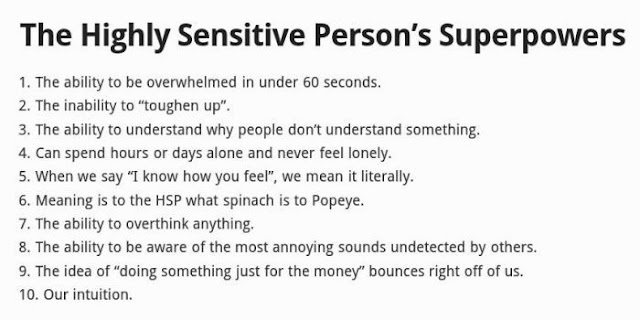I believe that people with dystonia and other disorders have very similar personality traits. One such trait, or rather, set of personality traits I find common among those with dystonia is HSP or “Highly Sensitive Person.” An “empath” is similar to an HSP. An HSP is a person having the innate trait of high sensory processing sensitivity (or innate sensitiveness as Carl Jung originally coined it). Roughly 15 to 20 percent of the population is considered HSP.(1)
In her book, The Highly Sensitive Person (1997), Dr. Elaine Aron outlines the characteristics of an HSP and how to live more easily in our often chaotic world. My use of the word chaotic is an indication that I have characteristics of an HSP. On the surface, being called “highly sensitive” could have negative connotations, but an HSP has many desirable traits.
Common traits of an HSP include great imagination, a curious mind, high intellectual abilities, creativity, conscientiousness, and compassion. They are hard workers, problem solvers, objective, and able to see the big picture. HSP’s also have profound and intense sensations, and tend to process events in their lives deeper and more intensely than others. This is due to a biological difference in their nervous systems which often makes them intuitive, assertive, and strong willed.
On the other hand, HSP’s can take things too personally, overanalyze things, feel defensive, experience social discomfort, are easily aroused, are sensitive to subtle stimuli, shy, sensitive to the moods of other people, and hold onto intense experiences and emotions.(1-3)
Typically an HSP demonstrates greater caution and reluctance than the non-HSP population with things such as taking risks, trying new experiences, meeting new people, and venturing to unfamiliar places. Then there is the other extreme – roughly 30 percent of HSP’s are thought to be extroverts and sensation seekers.(1-3)
Most people I know with dystonia have many HSP qualities. This is neither good nor bad. The important thing is being mindful of your tendencies so you can use your personality traits to your advantage to progress forward and work on those that are holding you back from where you want to be.
References
1) Aron, E. The Highly Sensitive Person. (1997) Broadway Books, New York, NY
2) www.huffingtonpost.com, Retrieved on January 22, 2014 from: http/www.huffingtonpost.com/roya-r-rad-ma-psyd/highly-sensitive-people_b_1286508.html
3) www.webmd.com, Retrieved on January 22, 2014 from: http/www.webmd.com/balance/features/are-you-too-sensitive
Tom Seaman is a Certified Professional Life Coach in the area of health and wellness, and author of the book, Diagnosis Dystonia: Navigating the Journey, a comprehensive resource for anyone suffering with any life challenge. He is also a motivational speaker, chronic pain and dystonia awareness advocate, health blogger, and volunteers for the Dystonia Medical Research Foundation (DMRF) as a support group leader, for WEGO Health as a patient expert panelist, and is a member and writer for Chronic Illness Bloggers Network. To learn more about Tom’s coaching practice and get a copy of his book, visit www.tomseamancoaching.com. Follow him on Twitter @Dystoniabook1 and Instagram




I believe that this is due to RCCX module mutation. Take a look, I expect you will find it interesting...www.rccxandillness.com
ReplyDeleteThank you for the info. I look forward to checking out your site.
Delete